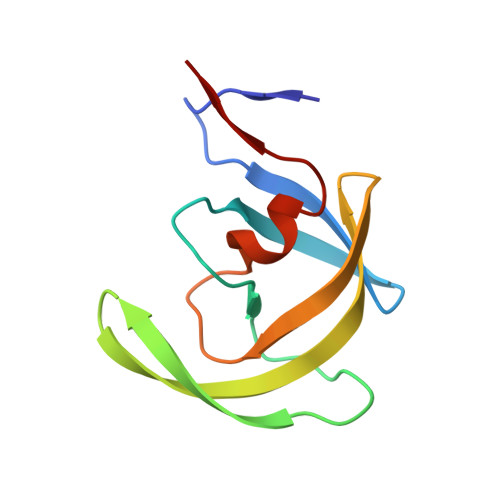Evaluating the substrate-envelope hypothesis: structural analysis of novel HIV-1 protease inhibitors designed to be robust against drug resistance.
Nalam, M.N., Ali, A., Altman, M.D., Reddy, G.S., Chellappan, S., Kairys, V., Ozen, A., Cao, H., Gilson, M.K., Tidor, B., Rana, T.M., Schiffer, C.A.(2010) J Virol 84: 5368-5378
- PubMed: 20237088
- DOI: https://doi.org/10.1128/JVI.02531-09
- Primary Citation of Related Structures:
3GI4, 3GI5, 3GI6 - PubMed Abstract:
Drug resistance mutations in HIV-1 protease selectively alter inhibitor binding without significantly affecting substrate recognition and cleavage. This alteration in molecular recognition led us to develop the substrate-envelope hypothesis which predicts that HIV-1 protease inhibitors that fit within the overlapping consensus volume of the substrates are less likely to be susceptible to drug-resistant mutations, as a mutation impacting such inhibitors would simultaneously impact the processing of substrates. To evaluate this hypothesis, over 130 HIV-1 protease inhibitors were designed and synthesized using three different approaches with and without substrate-envelope constraints. A subset of 16 representative inhibitors with binding affinities to wild-type protease ranging from 58 nM to 0.8 pM was chosen for crystallographic analysis. The inhibitor-protease complexes revealed that tightly binding inhibitors (at the picomolar level of affinity) appear to "lock" into the protease active site by forming hydrogen bonds to particular active-site residues. Both this hydrogen bonding pattern and subtle variations in protein-ligand van der Waals interactions distinguish nanomolar from picomolar inhibitors. In general, inhibitors that fit within the substrate envelope, regardless of whether they are picomolar or nanomolar, have flatter profiles with respect to drug-resistant protease variants than inhibitors that protrude beyond the substrate envelope; this provides a strong rationale for incorporating substrate-envelope constraints into structure-based design strategies to develop new HIV-1 protease inhibitors.
Organizational Affiliation:
Department of Biochemistry and Molecular Pharmacology, University of Massachusetts Medical School, 364 Plantation Street, Worcester, MA 01605, USA.

















